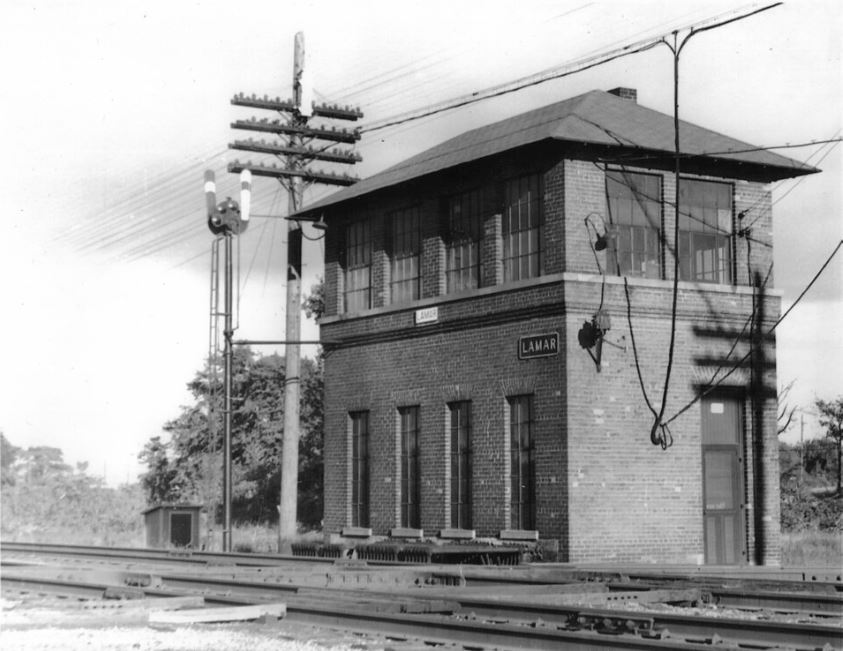- Details
- Hits: 3175
Interlocking: Lamar Tower, MI (Grand Rapids)

Lamar was a PM staffed tower. Leverman/operators were paid 58¢ per hour on all shifts in 1927. [PM Labor agreement 1927]
Photo Info: A photo of the Lamar interlocking tower.
Notes
The telegraph call sign for this tower on the NYC was "MR". [ETT-1922]
Time Line
1903. This is a Saxby-Farmer Lever machine from Union Switch & Signal Co. [MCR-1904]
1912. The railroad commission approves plans for a full interlocking and derailing switch and signal system at this location. Likely a replacement. [MCR-1912]
1929. November 7. SIGNALMAN SETS BLOCKS AGAINST TRAINS AND DIES. Grand Rapids, Nov. 7 (AP) William Denton Bird, 59, veteran watchman in the signal tower at the intersection of the New York Central and Pere Marquette tracks in Wyoming township, set the signals against all trains Tuesday and died of heart trouble.
This is the picture pieced together by fellow railroad men for Coroner Harmon C. Wolfe, after Bird's body was found alone at his post in a chair between two long rows of levers that threw switches for the intricate rail traffic. The last train to get Bird's signal was the midnight Pere Marquette passenger train. A New York Central freight train approached the crossing some time after and stopped for the red light. After a long wait, the brakeman climbed the tower and found the watchman dead. [BCE-7/7/1929]
Bibliography
The following sources are utilized in this website. [SOURCE-YEAR-MMDD-PG]:
- [AAB| = All Aboard!, by Willis Dunbar, Eerdmans Publishing, Grand Rapids ©1969.
- [AAN] = Alpena Argus newspaper.
- [AARQJ] = American Association of Railroads Quiz Jr. pamphlet. © 1956
- [AATHA] = Ann Arbor Railroad Technical and Historical Association newsletter "The Double A"
- [AB] = Information provided at Michigan History Conference from Andrew Bailey, Port Huron, MI

